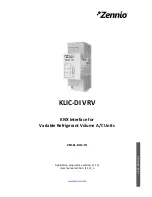
Appendix A
SCXI Troubleshooting and Common Questions
A-2
www.ni.com
Common Questions and Problems
All my channels float to a positive rail when I try to take a
measurement.
Make sure that the signal reference settings for your DAQ device match the
SCXI module. For example, if your device is configured for NRSE, make
sure that the cabled SCXI module is also (this may require a jumper
setting).
I am trying to communicate with multiple chassis over an RS-485
network but can communicate only with the first chassis or not at all.
To communicate with multiple chassis, the communication path from
the computer to the SCXI chassis must also be RS-485, using either an
installed RS-485 communications card or an RS-232/RS-485 converter.
Each chassis must have a unique HDLC address. Make sure the RS-485
network is configured for 4-wire operation. You must also be using
NI-DAQ for PC compatibles version 4.9.0 or later.
When using LabVIEW, how do I address the SCXI-1200 analog input
channels?
Use the onboard channel number to address a particular analog input
channel. Do not use the SCXI string
ob0!sc1!md
…
.
Using LabVIEW, I am acquiring two ground-referenced signals with
my SCXI-1100. I am using the string
1!MD1!0:1
; the channel 0 signal
comes from a 2 V source and the channel 1 signal originates from a 5 V
source. My scan rate is 10 Hz, which is relatively slow. My software
reading for channel 0 is about the same as channel 1. What is wrong?
If you have enabled the 4 Hz or 10 kHz filter on the SCXI-1100, or if you
are using high gains, set the interchannel delay to a value that gives the
amplifier time to settle for each channel. The default interchannel delay is
automatically set to the shortest interval with which the DAQ device can
work, but no faster than 3 µs if you are using SCXI. You can use the
AI Config VI to specify a longer interchannel delay, or you can use the
advanced Analog Input Clock Config VI to specify slower channel clock
parameters. Do not confuse the scan rate parameter, which determines the
time between successive scans, with the channel rate. You can specify the
scan rate, but not the channel rate, for the Easy I/O VIs and most of the Data
Acquisition example VIs.















































